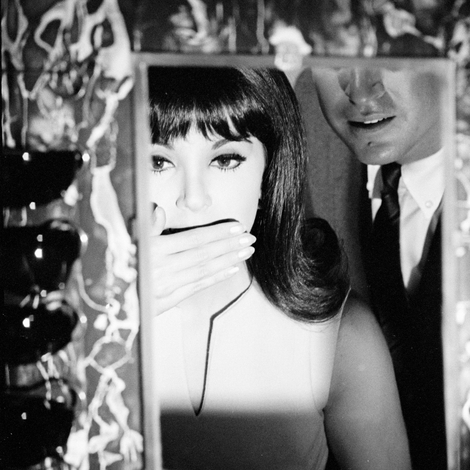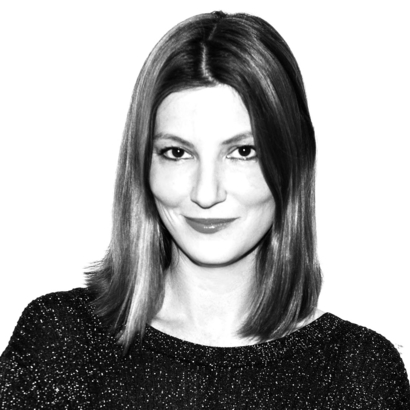In most European cities, naked people in the streets are generally a cause for concern. Munich is much more welcoming. On a temperate day, visitors will encounter all sorts of nude peacocking in the Schönfeldwiese, a grassy meadow in the 926-acre Englischer Garten, Munich’s version of Central Park. Body-positive locals toss volleyballs, sunbathe, and monitor the bottles of Augustiner-Bräu they’ve submerged in the stream. It all seems very free-spirited, perhaps even French.
In some ways, Munich is loud and proud about its past. It’s the birthplace of Oktoberfest, Richard Strauss, and the glockenspiel. It’s wheat beer swigged from a gallon-size stein, a jovial waitress busting out of her Trachten, a Christmas market on the Marienplatz, a blue-and-white Maypole in a market square.

But as the crucible of the Nazi Party, Munich’s history is more complicated, and for decades it concealed it. Unlike Berlin, which prominently installed its Memorial to the Murdered Jews of Europe next to the Brandenburg Gate, Munich tended to obscure its remembrances of the Holocaust—a small plaque here and there.
But things are changing. The city has now installed more than 10,000 plaques and steles that list the last addresses of residents killed by the Nazis. The Square for the Victims of National Socialism, an eternal flame housed in an iron cage, was erected in 2014 near the center of town. The Munich Documentation Center for the History of National Socialism, which opened in 2015, quickly established itself as one of the city’s essential museums.
As Munich becomes more comfortable addressing this dark chapter, it is also benefiting from an influx of young people, many of whom toil away at the shiny new offices of tech firms such as Apple and Google. In 2018, Condé Nast Germany moved its operations from Berlin into a Richard Meier–designed building in Oskar-von-Miller-Ring, and the global headquarters of Adidas occupies a spectacular campus in nearby Herzogenaurach.

And in November, Munich welcomed its first new luxury hotel in 16 years. The Rosewood Munich occupies the site of two historic buildings—the former Bavarian State Bank headquarters and the adjacent Palais Neuhaus-Preysing, an aristocratic home—on a tranquil, stylish street in the city’s Old Town.
Visitors will encounter all sorts of nude peacocking in the Schönfeldwiese.
During the 10-year renovation, the façades were meticulously restored, but the rest of the buildings were gutted. The Rosewood’s high-tech, higher-comfort guest rooms and common areas were reimagined by London-based interior design firm Tara Bernerd & Partners. While the aesthetic leans midcentury—geometric chairs, low-slung tables, small-scale sofas—the color palette of browns, grays, and the occasional yellow and blue accents skews Bauhaus.

In just a few months, the Rosewood established itself as the unofficial headquarters of the city’s style set. Throughout the afternoon, locals wearing the latest looks from German design darlings Dorothee Schumacher and Jil Sander are cocktailing and caffeinating in the indoor-outdoor Wintergarten. At night, Brasserie Cuvilliés, an Alpine-leaning restaurant, and Bar Montez, an intimate lounge, are heaving with Establishment deal-makers.
Further afield, more treasures await. Gasthaus Waltz, a bustling, rustic restaurant with a low-key terrace on a quiet residential street in the artsy Glockenbachviertel neighborhood, is nearly perfect. Opened last year by the sommeliers Stefan Grabler and Markus Hirschler (formerly of the popular Grapes Weinbar), it serves regional dishes using the highest-quality ingredients. Do not miss the second-to-none goulash, Steirisches Backhendel (fried chicken) with potato-and-watercress salad, and the wine list, with offerings from small producers who use natural and biodynamic production methods.

Gasthaus Waltz is a modern and necessary counterpoint to the city’s classic (and still very fun) sausage emporiums, which are ideal lunch stops between visits to the BMW Museum (largely an exercise in marketing, but rewarding for automotive aficionados) and Olympic Park, which hosts many of the city’s concerts and events. Old standbys such as Nürnberger Bratwurst Glöckl am Dom, Zum Dürnbräu, and Staatliches Hofbräuhaus in München brewery, which was co-founded by Wilhelm V, Duke of Bavaria in 1589, are still churning out the kinds of sausages that Americans can only dream of, and at prices that make it tempting to order six or even eight. (They’re fairly small.)
In Munich, overindulgence will happen, but as an antidote, there is walking and shopping. No stroll through the Englischer Garten is complete without marveling at the surfers navigating the Eisbach River and its rocks. Nearby, the Manufactum department store sells everything from household brushes and beauty products to shoes and timepieces. Those in search of high-quality, original handbags should take the (clean, efficient) metro a few short stops to Kathrin Heubeck’s boutique, near Glockenbachviertel, which is also Munich’s epicenter of well-edited secondhand-clothing boutiques and antique shops.

Once you spend a long weekend in its thrall, Munich reveals itself as one of the most exciting, gratifying, and underrated cities in Europe at the moment. “The Florence of Germany!,” as locals like to say. As the cost of living in—and traveling to—places such as London, Paris, and Rome continues to soar, now’s the time to go, especially before the over-lubricated Oktoberfest crowds arrive in September. Naked and inebriated is where AIR MAIL draws the line.
Rooms at the Rosewood Munich begin at $800 per night; the writer was a guest of the hotel
Ashley Baker is a Deputy Editor at AIR MAIL and a co-host of the Morning Meeting podcast


